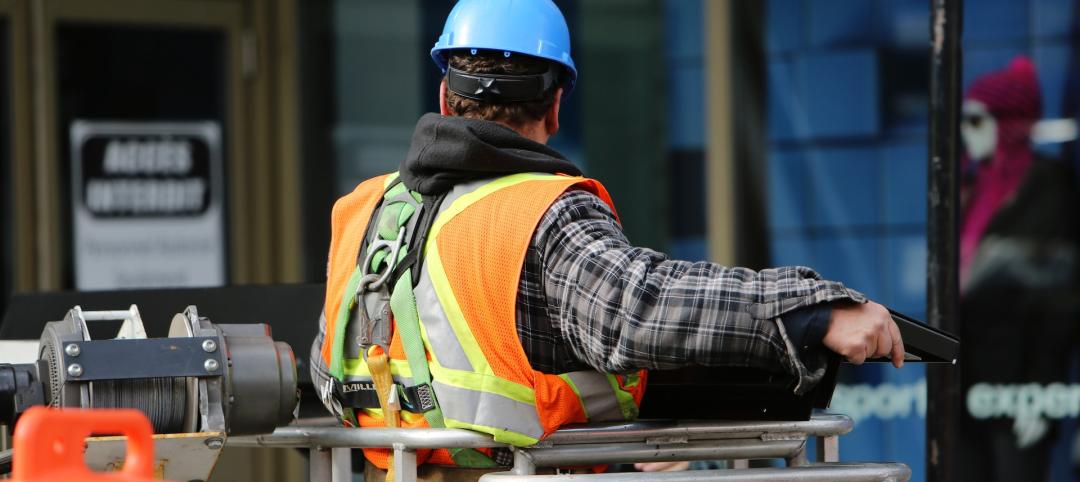The construction unemployment rate jumped to 18.8% in November as the sector lost another 5,000 jobs since October, according to an analysis of new federal employment data released today by the Associated General Contractors of America. The data indicates that the construction sector has suffered more than any other industry during the economic downturn, association officials said.
"The unemployment report shows construction still has not broken free of the recession that has gripped the industry since 2006," said Ken Simonson, the association's chief economist. "Other than the stimulus and other temporary federal programs, it has been a pretty bleak four yours for the industry."
Simonson noted that the construction industry has lost 2.1 million jobs since employment in the sector peaked in August 2006. He added that the sector has continued to lose jobs during the past twelve months even as overall private employment has picked up. Since November 2009, the industry has lost 117,000 jobs while the private sector added 1,088,000 jobs. The industry's 18.8% unemployment rate, not seasonally adjusted, also was the highest of any industry and roughly double the overall unemployment rate.
The only construction segment to add jobs in the past year has been heavy and civil engineering construction, which has benefitted from federal stimulus, military base realignment, and Gulf Coast hurricane-prevention projects, Simonson observed. Meanwhile, residential construction has lost 79,000 jobs over the past twelve months, while nonresidential specialty trade contractors and nonresidential building - the other two segments in the nonresidential category - have lost 62,000 jobs.
Association officials cautioned that the stimulus and other temporary federal programs would begin winding down in 2011, most likely before private, state or local demand for construction picks up. They urged Congress and the Administration to act on a series of long-delayed infrastructure bills for water, transportation and other infrastructure programs.
"We're hoping Congress doesn't cut off federal investments that are almost single-handedly keeping this industry together," said Stephen E. Sandherr, the association's chief executive office. "Even the Deficit Commission understands that the one thing we can't afford to do as a nation is neglect our infrastructure," Sandherr added, referring to the commission's proposal to raise the gas tax to fund transportation upgrades.
Related Stories
Design Innovation Report | Apr 19, 2023
Reinforced concrete walls and fins stiffen and shade the National Bank of Kuwait skyscraper
When the National Bank of Kuwait first conceived its new headquarters more than a decade ago, it wanted to make a statement about passive design with a soaring tower that could withstand the extreme heat of Kuwait City, the country’s desert capital.
Design Innovation Report | Apr 19, 2023
HDR uses artificial intelligence tools to help design a vital health clinic in India
Architects from HDR worked pro bono with iKure, a technology-centric healthcare provider, to build a healthcare clinic in rural India.
Design Innovation Report | Apr 19, 2023
Meet The Hithe: A demountable building for transient startups
The Hithe, near London, is designed to be demountable and reusable. The 2,153-sf building provides 12 units of business incubator workspace for startups.
Contractors | Apr 19, 2023
Rising labor, material prices cost subcontractors $97 billion in unplanned expenses
Subcontractors continue to bear the brunt of rising input costs for materials and labor, according to a survey of nearly 900 commercial construction professionals.
Airports | Apr 18, 2023
India's mammoth new airport terminal takes ‘back to nature’ seriously
On January 15, 2023, Phase 1 of the Kempegowda International Airport’s Terminal 2, in Bengaluru, India, began domestic operations. The 2.75 million-sf building, designed by Skidmore, Owings & Merrill (SOM), is projected to process 25 million passengers annually, while providing its travelers with a healthier environment, thanks to extensive indoor-outdoor landscaping that offers serenity to what is normally a frenzied experience.
Contractors | Apr 18, 2023
New York City construction fatalities, injuries rise in 2022 as activity booms
New York City’s construction fatalities rose from nine in 2021 to eleven in 2022, according to a report by the New York City Department of Buildings. Recorded injuries also rose to 554 last year after leveling off in 2020 and 2021.
Resiliency | Apr 18, 2023
AI-simulated hurricanes could aid in designing more resilient buildings
Researchers at the National Institute of Standards and Technology (NIST) have devised a new method of digitally simulating hurricanes in an effort to create more resilient buildings. A recent study asserts that the simulations can accurately represent the trajectory and wind speeds of a collection of actual storms.
Green | Apr 18, 2023
USGBC and IWBI unveil streamlined certification pathway for LEED and WELL green building programs
The U.S. Green Building Council, Green Business Certification Inc., and the International WELL Building Institute released a streamlined process for projects pursuing certifications for the LEED green building rating system and the WELL Building Standard. The new protocol simplifies documentation for projects that are pursuing both certifications at the same time or that have already earned one certification and are looking to add the other.
K-12 Schools | Apr 18, 2023
ASHRAE offers indoor air quality guide for schools
The American Society of Heating, Refrigerating and Air-Conditioning Engineers (ASHRAE) has released a guide for educators, administrators, and school districts on indoor air quality. The guide can be used as a tool to discuss options to improve indoor air quality based on existing HVAC equipment, regional objectives, and available funding.
Data Centers | Apr 14, 2023
JLL's data center outlook: Cloud computing, AI driving exponential growth for data center industry
According to JLL’s new Global Data Center Outlook, the mass adoption of cloud computing and artificial intelligence (AI) is driving exponential growth for the data center industry, with hyperscale and edge computing leading investor demand.
















